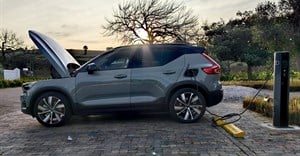
Subscribe & Follow
Jobs
- Sales Manager Germiston
- Fleet Supervisor Germiston
- Motor Vehicle Technician Vredendal
- Parts Sales Executive Vredendal
- ARC Panel Workshop Manager Cape Town
- ARC Strip and Assembler Cape Town
Feast and famine for SA motor industry

After decades of feast or famine driven by extremes of market demand, the SA motor industry has set a new standard: simultaneous feast and famine.
While bemoaning the collapse of domestic new-vehicle sales, the industry is celebrating booming production. It is a feature of the SA environment that while more than 50% of vehicles sold here are imported, SA motor companies export more than 50% of what they build. So increased export demand in 2016 more than compensated for the loss of production caused by an overall 11.4% drop in local sales compared with 2015. Imported vehicles were hardest hit by that decline.
Specialist importers, with no export earnings to balance out escalating import costs caused by the weak rand, experienced a torrid time: none more so than French brand Citroën, which quit the SA market at the end of a year in which it sold fewer than 200 cars. Local MD Francis Harnie says the departure will allow him to concentrate on building up sister brand Peugeot, for which he is also responsible, but that Citroën could return when the situation has stabilised.
As happened a few years ago, when several foreign brands quit SA, it only takes one to create a domino effect. At least one other low-volume imported brand is understood to be considering its future here, depending on the rand's performance and how quickly the market rebounds.
After three consecutive years of slowing demand, the SA motor industry sold 547,442 new vehicles in 2016. That's nearly 100,000 fewer than the 649,216 sales recorded in 2013, before the slump began. Car sales over the same period fell to 361,273 from 450,296. Exports, by contrast, set a record of 344,822 in 2016.
Local executives are now confidently predicting growth on all fronts. What they can't agree on is the detail.
General Motors SA (GMSA) is among those who believe the local market won't start to recover until at least 2018. Sales this year will be "stagnant" and, as in 2016, manufacturers and dealers will have to resort to aggressive trading to shift stock.
The Ford SA network may have to work harder than most. Negative publicity from the fire-related death of a Ford Kuga driver, and reports of at least 40 more Kugas bursting into flames, is causing untold damage to the brand. The company agreed last week to recall over 4,500 Kugas and replace faulty cooling-system parts.
Ford is fighting police for access to evidence it says will help to pinpoint the cause of the fatal fire and prevent it happening to other Kuga owners. Its Western Cape high court application to see police dockets has been postponed to 9 February.
The trading environment is tough enough without complications like this. GMSA says continued rand volatility, subdued business and consumer confidence, inflation, increasing fuel prices, rising interest rates, high levels of household debt and muted economic growth prospects all have the potential to stifle market growth.
The US-owned company's caution is understandable. It was one of only two local mass manufacturers not to feast at the export table in 2016 and it was forced to shed more than 100 assembly-plant jobs late in the year through a voluntary-severance agreement.
The other one to miss out on mass exports was Nissan SA. Its MD, Mike Whitfield, thinks local market recovery could begin in the second half of 2017 as a more positive economic outlook translates into improved sales.
That's also the official view of the National Association of Automobile Manufacturers of SA (Naamsa), of which Whitfield is president. Naamsa thinks second-half sales could grow by as much as 3.5% compared with 2016 on the basis of some economists' projections of improvements in GDP, gross domestic expenditure, private consumption expenditure and fixed investment. But none of these is guaranteed and the more commonly held view is that sales recovery will have to wait.
There is no such discord on exports, where the consensus is for continued growth. Inevitably, there are some concerns. Exports depend on demand in other parts of the world and question marks hang over two of SA's biggest markets: the UK, where the nation's possible exit from the European single market is causing trade uncertainty; and the US, where incoming president Donald Trump has targeted the US motor industry with his protectionist rhetoric.
Overall, though, Naamsa says "vehicle exports to Europe, Australasia, the US, Asia and South America are expected to show further upward momentum".
Missing from that list is Africa, which is supposed to be a major target market for SA vehicle producers. For Nissan SA and GMSA, it is their primary export destination. But new-vehicle markets across the continent have collapsed in the past two years as tumbling oil and commodities prices have starved economies of revenue and foreign exchange.
In Nigeria, which is trying to create its own motor industry and is supposed to import thousands of SA-built Nissan and Ford bakkie kits, "the market is at a standstill," says Whitfield, who is responsible for all Nissan group activities in sub-Saharan Africa.
He says the region's vehicle market in 2016 was "the most challenging in recent times" but that recovery is inevitable. The only question is when. "One thing about Africa is that as fast as economies go down, the upside can be just as dramatic," he says. "We are starting to see some positive signs in places like Kenya. Some countries could have double-digit growth this year. I remain positive."
So does GMSA, though once again not immediately. The short-term outlook is subdued but "in the long term there remains opportunity for growth as disposable income levels improve, and more countries experience political stability and invest in the development of infrastructure."
The importance of exports, wherever they go, lies not just in boosting production but also in balancing foreign exchange. Ford SA, Toyota SA, Mercedes-Benz SA, BMW SA and Volkswagen SA all export most of the cars and bakkies they build, offsetting import costs on the many built-up vehicles they bring into the country. Many of the components used on SA production lines are also sourced overseas.
This balancing act is intentional. Under the 2013-2020 automotive production & development programme and its predecessor, the motor industry development plan, SA motor companies have been encouraged to concentrate on local assembly of a few, high-volume products with export potential, and import everything else their customers want.
That's great for outward-focused local companies but not for importers with nothing going the other way. Harnie says the rand has played havoc with importers' costs and undermined their pricing competitiveness. "It basically priced us out of the market." He adds: "I'm not sure it will be much easier for importers in 2017. Admittedly, the rand is stronger against the euro than it was 12 months ago, but that doesn't mean it won't weaken again."
Citroën and Peugeot are owned by the same French parent company. They once had separate SA distribution and marketing companies before combining resources. "We are currently not strong enough here for both brands," says Harnie, who adds that Peugeot dealers will continue to service Citroën owners' cars - a task made simpler by the fact that more than 75% of components are common to both brands.
With no Citroën to worry about, Harnie says Peugeot can take advantage of the parent company's renewed interest in SA and other emerging markets. "The group has had a couple of bad financial years so could not invest as it wanted. Now they are profitable again so are keen to put more resources here. That means more products suited to SA and more marketing investment. We intend to relaunch the group in SA."
Source: Financial Mail
Source: I-Net Bridge

For more than two decades, I-Net Bridge has been one of South Africa’s preferred electronic providers of innovative solutions, data of the highest calibre, reliable platforms and excellent supporting systems. Our products include workstations, web applications and data feeds packaged with in-depth news and powerful analytical tools empowering clients to make meaningful decisions.
We pride ourselves on our wide variety of in-house skills, encompassing multiple platforms and applications. These skills enable us to not only function as a first class facility, but also design, implement and support all our client needs at a level that confirms I-Net Bridge a leader in its field.
Go to: http://www.inet.co.za
















